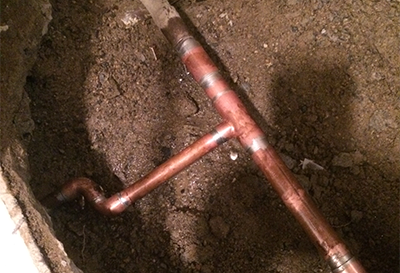6 Methods to Spot Covert Water Line Leaks Successfully
6 Methods to Spot Covert Water Line Leaks Successfully
Blog Article
How do you really feel on the subject of Leaking water lines?

Early discovery of dripping water lines can alleviate a potential disaster. Some little water leaks might not be noticeable.
1. Analyze the Water Meter
Every house has a water meter. Checking it is a guaranteed way that helps you discover leakages. For beginners, switch off all the water resources. Guarantee nobody will certainly purge, utilize the faucet, shower, run the washing device or dishwashing machine. From there, most likely to the meter as well as watch if it will change. Since no one is using it, there should be no movements. If it relocates, that shows a fast-moving leak. If you spot no modifications, wait an hour or 2 as well as examine back once again. This suggests you may have a slow leakage that might also be underground.
2. Check Water Consumption
If you spot sudden changes, regardless of your usage being the same, it indicates that you have leaks in your plumbing system. An abrupt spike in your bill shows a fast-moving leak.
Meanwhile, a consistent increase on a monthly basis, despite the same practices, shows you have a slow-moving leakage that's additionally gradually intensifying. Call a plumber to completely examine your building, specifically if you really feel a warm location on your floor with piping below.
3. Do a Food Coloring Test
30% comes from bathrooms when it comes to water usage. Test to see if they are running effectively. Decline specks of food color in the tank and wait 10 minutes. If the color somehow infiltrates your dish throughout that time without flushing, there's a leak between the storage tank and dish.
4. Asses Outside Lines
Do not neglect to check your outdoor water lines also. Must water leak out of the link, you have a loose rubber gasket. One little leak can lose heaps of water and increase your water expense.
5. Evaluate the scenario as well as evaluate
House owners should make it a routine to examine under the sink counters and even inside closets for any bad odor or mold growth. These 2 warnings indicate a leak so punctual attention is needed. Doing regular evaluations, also bi-annually, can save you from a significant problem.
Extra significantly, if you know your house is currently old, maintain a watchful eye on your heaters, hose pipes, pipelines and so on. Look for stainings and damaging as the majority of home appliances and pipelines have a life expectancy. They will certainly also normally wear away due to tear and also put on. If you suspect dripping water lines in your plumbing system, do not wait on it to escalate. Call a specialist plumber right away so you don't wind up with a terrible mess in your home.
Early detection of leaking water lines can minimize a possible calamity. Some little water leakages may not be noticeable. Examining it is a proven means that helps you uncover leakages. One tiny leakage can waste loads of water and increase your water costs.
If you presume leaking water lines in your plumbing system, do not wait for it to escalate.
WARNING SIGNS OF WATER LEAKAGE BEHIND THE WALL
PERSISTENT MUSTY ODORS
As water slowly drips from a leaky pipe inside the wall, flooring and sheetrock stay damp and develop an odor similar to wet cardboard. It generates a musty smell that can help you find hidden leaks.
MOLD IN UNUSUAL AREAS
Mold usually grows in wet areas like kitchens, baths and laundry rooms. If you spot the stuff on walls or baseboards in other rooms of the house, it’s a good indicator of undetected water leaks.
STAINS THAT GROW
When mold thrives around a leaky pipe, it sometimes takes hold on the inside surface of the affected wall. A growing stain on otherwise clean sheetrock is often your sign of a hidden plumbing problem.
PEELING OR BUBBLING WALLPAPER / PAINT
This clue is easy to miss in rooms that don’t get much use. When you see wallpaper separating along seams or paint bubbling or flaking off the wall, blame sheetrock that stays wet because of an undetected leak.
BUCKLED CEILINGS AND STAINED FLOORS
If ceilings or floors in bathrooms, kitchens or laundry areas develop structural problems, don’t rule out constant damp inside the walls. Wet sheetrock can affect adjacent framing, flooring and ceilings.
https://www.servicemasterbyzaba.com/blog/how-to-detect-water-leakage-in-walls/

I found that blog post about Top leak detection hacks while browsing the internet. Appreciated our write up? Please share it. Let someone else check it out. We enjoy reading our article about Finding hidden leaks.
Precision emergency plumbing services here. Report this page